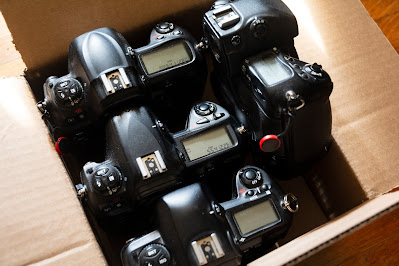Nikon F5 > D1X > D2X > D3
7.21.2022
7.16.2022
The need for speed...
One thing I noticed when I was shooting the D1X last month was how quickly the buffer filled up. I popped off several shots at that Caddy as it rolled by and the camera made me stop and let it catch up at something like seven or eight.
This confused me as all the media about the camera, even when it was new, claimed the D1X could shoot three frames per second for 21 consecutive shots before the buffer filled.
The sports-oriented D1H had less resolution but could blaze away at 5 FPS for forty shots before it bogged down. That's a full eight seconds with the shutter button mashed; enough time to cover an NFL play from the snap.
The disconnect, as I soon figured out, was that I was shooting in RAW, which was not as often done in the earliest days of digital. That buffer that held twenty-some JPEGs only holds six or seven .NEF files (Nikon's proprietary RAW format.) You can count "two Mississippi" and then you're done until the buffer's flushed out, or has room for another image.
From a retrospective on the D1X's predecessor, the original D1:
The super fast speed was partially hindered by the settings. While JPEG processing was really fast and almost instantenious, switching to RAW cause the camera to crawl. Storage time went sky high, 45 secs per photo not uncommon. People complaining today about slow CF/SD cards shoud respect that a microdrive could only deliver 0.5 MB/sec and the D1 electronics limited the fastest CF Cards (12x Lexar) to data rates well below 1 MB/sec.I was using a 133x Transcend 2GB card, probably capable of receiving data a lot faster than the old D1X could send it, so at least the buffer probably cleared faster.
.
Subscribe to:
Posts (Atom)


